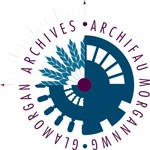At the height of summer thoughts turn in many towns and villages to the annual summer fete. We therefore feature today a set of pictures taken by local photographer, Edwin Miles, of the Cowbridge “Fete and Gala” held one hundred and thirteen years ago on 16 June 1909.
The centrepiece of the fete was the initial procession through the main street and the first photograph captures this perfectly.

If you look carefully you will see that the procession is headed by the Lord Mayor and a young girl, Elizabeth Swinton, dressed as the Herald of Wales. They are followed by the Talygarn Brass Band and the local fire brigade, complete with fire engine. Just behind the fire engine you might be able to see a group of nurses, for the carnival aimed to raise money for the local Nursing Association. The weather was mixed that day and the crowd, turned out in their Sunday best, looks a little sparse. Nevertheless, look at the buildings on the left and you can spot people who have stepped out of their upstairs windows to watch while standing on a porch or bay window roof.
Take a look now at the second photograph. It’s difficult to capture the frivolity and fun of a carnival parade but Edwin Miles has done his best.

After the formal groups have passed the crowd and the procession, now dominated by characters and entertainers in fancy dress, have almost merged. Some are walking, many playing musical instruments, while others are in horse drawn carts. The parade included many well-known local figures, including Mrs Ebsworth as a Russian lady and Messrs Gwyn and Wilkins dressed as Italians and playing a barrel organ – costumes that ..deceived even their most intimate friends. In all, there were nearly four hundred people in the parade and perhaps the most popular were the “costers” – comedians dressed as cockney barrow boys.
In the last photograph order has been restored to the procession. The picture tells us a little about what happened next, with a group in the foreground carrying a “Houp-La!” sign followed by a number of young girls riding on a cart with a Maypole.

The next and last stop for the procession was the cricket field, loaned to the fete committee for the day by the local cricket team, the Glamorgan Gypsies.
With entertainment at the field provided by the Maypole dancers, the Talygarn Brass Band and a male voice choir, those attending could enjoy the numerous side shows including a coconut shy and an “Aunt Sally”, alongside the hoopla. For the more energetic there was a gymkhana and “rustic sports” with the evening topped off by singing. Although it rained later in the day, over a thousand people attended the tea provided in the afternoon and around £100 was raised. So all in all, a good day was enjoyed by everyone.
The photographs were taken by a local photographer, Edwin Miles, who at that time owned a Studio on Ewenny Road in Bridgend. Miles also took photographs, primarily used as postcards, of many towns and villages across the Vale of Glamorgan between 1905 and 1929. We plan to feature more over the coming months. The main collection can be seen at Glamorgan Archives or online on the catalogue http://calmview.cardiff.gov.uk/ under reference D261. The Cowbridge Carnival Photographs, used in this article, can be found under reference D1622.
Incidentally if you are bemused by the reference to an “Aunt Sally” we are told that it’s a traditional game where a ball (a dolly) fixed to the top of a pole has to knocked off by throwing a stick.
Tony Peters, Glamorgan Archives Volunteer




